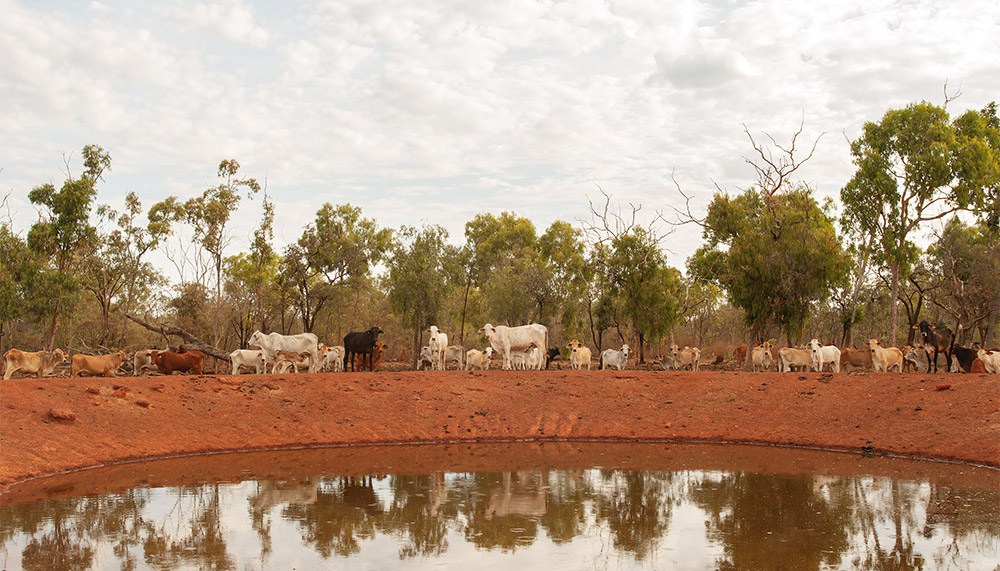In just over a decade, Jay and Bec Mohr-Bell have worked hard to focus on the positives and consolidate their investment in the small NT cattle station they call home.
Story + Photos Annabelle Brayley
It’s very late, and as cool as a July night is ever likely to get here, when Jay Mohr-Bell rolls into Mathison station, 100km south-west of Katherine. He’s been away working on the water drilling rig that provides some of the off-farm income he and his wife Bec use to facilitate their 13-year-old cattle business.
In his absence, Bec parents their two small sons, Jock, 4, and Corbin, nearly 2. She also oversees their staff – ideally a nanny, two stationhands and a bore assistant/stationhand – and the day-to-day running of the station, and runs her own business Argyll Consulting; all while incubating their third child.
Bec is an agricultural economist with a PhD in economics, but admits she had a lot to learn about producing cattle in the Territory. She credits growing up in a family-run beef and sheep business in northern NSW with providing the foundations for what she is doing now. “If Jay is away, I can deal with most things,” she says. “And he’s always here to do things like preg testing.”
Jay grew up on a cotton farm at Moree, NSW, and spent his first few years out of school trying out possibilities, initially in the Kimberley, briefly at university, working in mining, and working on ranches and a feedlot in Texas, USA, before returning to work for the North Australian Pastoral Company. “They were a long way ahead of the curve in their ideas and cattle management,” Jay says.
In 2009, having formed a partnership with his father, John, and an outside investor, Jay registered their company, Pancho Beef, using his middle name in a nod to the Argentine bloodlines of his father. They had cattle on agistment in a couple of different places in Queensland and the NT when they bought Mathison in 2011 as a mostly undeveloped block. “There were no yards, only a couple of watering points, less than a third was fenced and what fencing there was was mostly in poor condition,” Jay says. “If it was an urban house block, they’d have called it a ‘renovator’s dream’.”
This story excerpt is from Issue #145
Outback Magazine: October/November 2022










